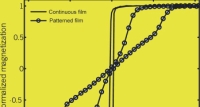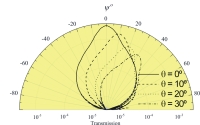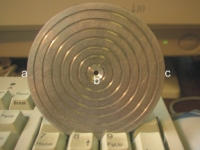CHARACTERISATION OF MATERIALS AND STRUCTURE
The optical reflectivity and transmissivity of optically-thin, multi-layered, metal and dielectric films, liquid crystal cells and micro-structured samples can be measured as a function of wavelength (visible to infra-red), angle-of-incidence and/or polarisation.
The time-resolved (1µs resolution) dynamic optical response of liquid crystal cells can be measured as a function of temperature.
Characterisation and use of acousto-optic devices including acousto-optic modulators, deflectors and tuneable filters.
Magnetic materials including multi-layer and nano-particle structures can be characterized via: Vibrating Sample Magnetometry, Torque Magnetometry and Magneto-Optic Kerr Effect (MOKE) measurements. The magnetization dynamics of magnetic materials can also be measured to femtosecond resolution using a pulsed laser system.
We have expertise in understanding and characterizing (theoretically and experimentally) the complex write and read processes and noise characteristics involved in ‘phase-change material’-based probe storage memories and magnetic, optical and solid-state data storage systems.
Microscopes available include: Scanning Electron (SEM), Atomic Force (AFM), Magnetic Force (MFM), Scanning Tunneling (STM), Electrical Force (EFM), Scanning Electrostatic Potential (SEPM), Confocal Fluorescence and Dark Field Microscopes.
We have a range of in-house-designed sensors that lock to, and thereby track, the position of an optical mode as it changes with time having sensitivity to a change in refractive index of 10-7 (or better). Different systems are available that are wavelength-tuneable, can be fibre-coupled, have a pixilated sensing head, can be compact, lightweight, cheap and / or employ electrochemically-controlled binding at the sensor head. These are leading to new biosensing techniques. A non-invasive detector for malaria is currently under development.
Natural optics: The transmissivity and reflectivity of (for example) iridescent insect wings that incorporate microstructure can be measured as a function of angle and wavelength. Microstructures that occur in nature can also be replicated on the centimetre scale (using a laser sinter system) so that the electromagnetic response of such systems can be characterized in the microwave regime.
Microwave studies: We are able to characterise the reflectivity and transmissivity response of diffraction grating, slit-array, hole-array, particle array and liquid crystal-filled structures over the frequency range: 5 to 100 GHz.
Fluorescence studies: The measurement of fluorescence lifetimes (~1ns-1ms) and photo-luminescence spectra allows the effects of microstructure on emissive materials to be studied.
Laser sources available include HeCd (325nm), Argon ion (458nm) and a 100 femto-second pulsed Ti-doped Sapphire (700nm and 1µm). |




